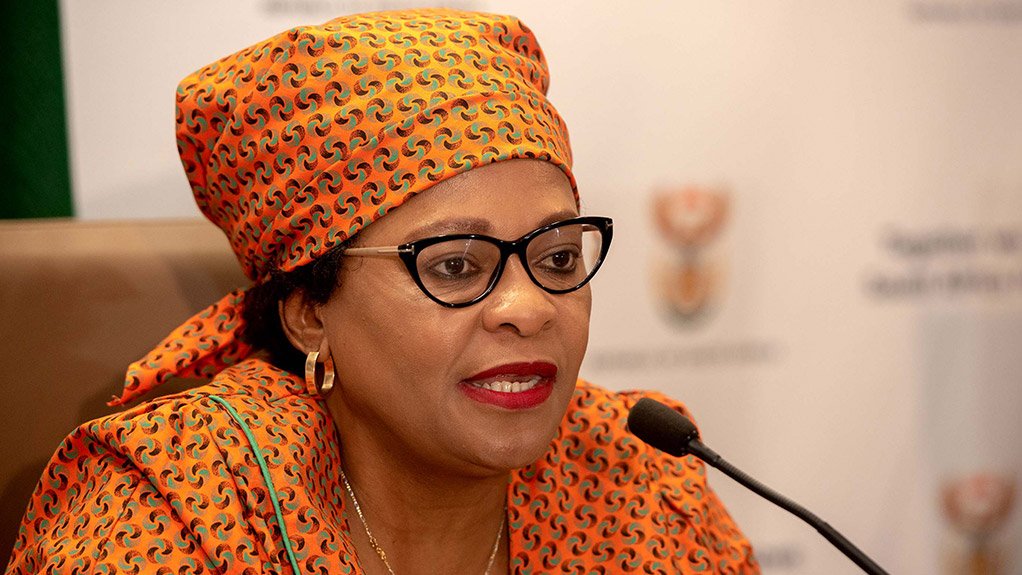/ MEDIA STATEMENT / The content on this page is not written by Polity.org.za, but is supplied by third parties. This content does not constitute news reporting by Polity.org.za.
The Minister of Environmental Affairs, Ms Nomvula Mokonyane, has published her intention to amend the Listed Activities and Associated Minimum Standards published under Government Notice No.686 in Gazette No. 42472 of 22 May 2019.
On 31 October 2018, the Acting Minister of Environmental Affairs made amendments to List of activities and associated minimum emission standards by publishing Government Notice No.1207 in Gazette No. 42013 (“the Notice”) under section 21 of the National Environmental Management: Air Quality Act, 2004 (Act 39 of 2004) (“NEMAQA”).
Due to the objections against the special arrangement inserted in Part 3, Category 1, Subcategory 1.1 and complaints received in respect of perceived inadequate public consultation on this specific provision, the Minister decided to withdraw the provision (Government Notice No. 687 in Gazette No. 42472) and further consult members of the public.
The intention of the amendment is to provide for existing plants to comply with a sulphur dioxide (SO2) minimum emission limit of 1000mg/Nm3 instead of 500mg/Nm3. This means that existing plants would reduce emissions from the current standard of 3500mg/Nm3 to 1000mg/Nm3.
This is a significant reduction and would still lead to improvements in ambient air quality as total SO2 emissions would be reduced by at least 50%. Currently, the State of Air Report over the years shows compliances with the SO2 annual ambient air quality standard but government continues to regulate it because of its contribution to secondary pollution.
Achievement of the new plant standard of 500mg/Nm3 for SO2 requires the installation of limestone based wet Flue Gas Desulphurisation (FGD) which is the biggest cost driver in pollution abatement technology. This technology has the SO2 removal efficiency of over 95 percent. Although FGD is efficient, there are challenges associated with it. The typical capital cost for a 4000MW power plant is R13 billion with an additional R3 billion operating cost per annum. These costs are very high for a slow growing fossil-fuel based economy.
Furthermore, FGD installation requires additional water resources and mining of new limestone as input material. South Africa’s water resources are already constrained and cannot cope with the current and the growing demand from both domestic and industrial users.
Limestone would have to be mined because FGD uses good quality limestone to absorb SO2 from the flue gas thus forming gypsum. The current market would not be able to absorb the gypsum that would be generated as such it would need to be disposed. The amount and quality of limestone needed is not readily available.
This means that new mines would be required and mining presents additional environmental problems. In addition, good quality limestone mines are located in the Northern Cape Province which is a considerable distance from the existing major sources of SO2 and transportation would add to greenhouse gas emissions, amongst others. It should also be noted that the use of FGD technology in a plant generates additional CO2 emissions, which is a priority pollutant in the Republic.
Revision of the new plant standard for the existing plants from 500mg/Nm3 to 1000mg/Nm3 opens up the scope for other technologies to be used in the abatement of SO2 pollution and would not lead to as much CO2 emissions. Dry Sorbent Injection (DSI), for example, is another type of FGD that does not require as much water. However, the SO2 removal efficiency is between 50 and 60%. Although the efficiency is low compared to wet FGD, it has lower capital costs, which are not an impediment to retrofitting existing plants.
The Act does not only aim to protect and enhance the quality of air in the Republic; but also secure ecologically sustainable development while promoting justifiable economic and social development. The process of making regulations is such that all objectives must be upheld. It is therefore in the interest of the Republic of South Africa to consider effecting this change, bearing in mind that the goal is to manage and reduce pollution and not necessarily to create avoidable non-compliances.
To access a copy of the gazette, click on the link below:
https://www.environment.gov.za/sites/default/files/gazetted_notices/nemaqa39of2004_listofactivities_atmospheric_emissions.pdf
Members of the public are invited to submit to the Minister, within 30 days from the date of the publication of this notice in the Gazette, written representations or objections on the proposed amendments to the following addresses:
Issued by the Department of Environmental Affairs
EMAIL THIS ARTICLE SAVE THIS ARTICLE ARTICLE ENQUIRY
To subscribe email subscriptions@creamermedia.co.za or click here
To advertise email advertising@creamermedia.co.za or click here











